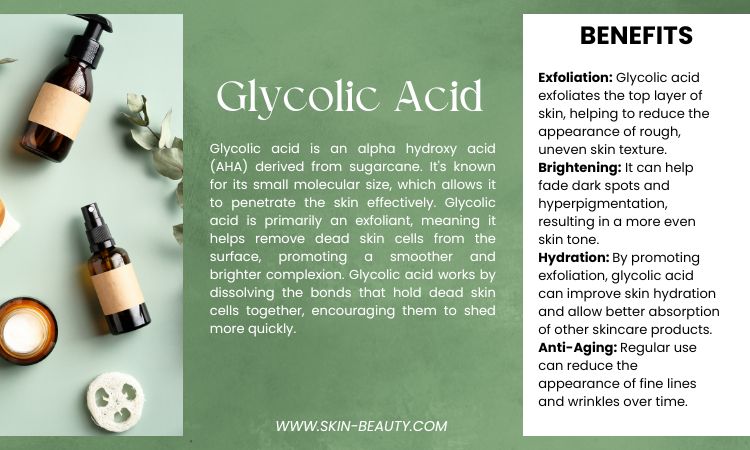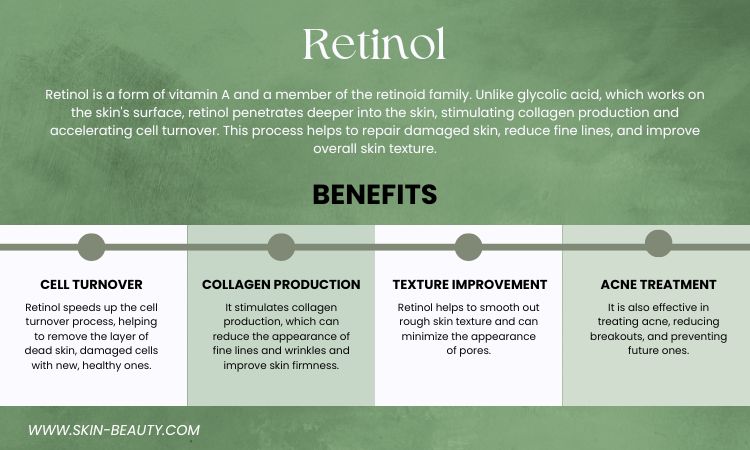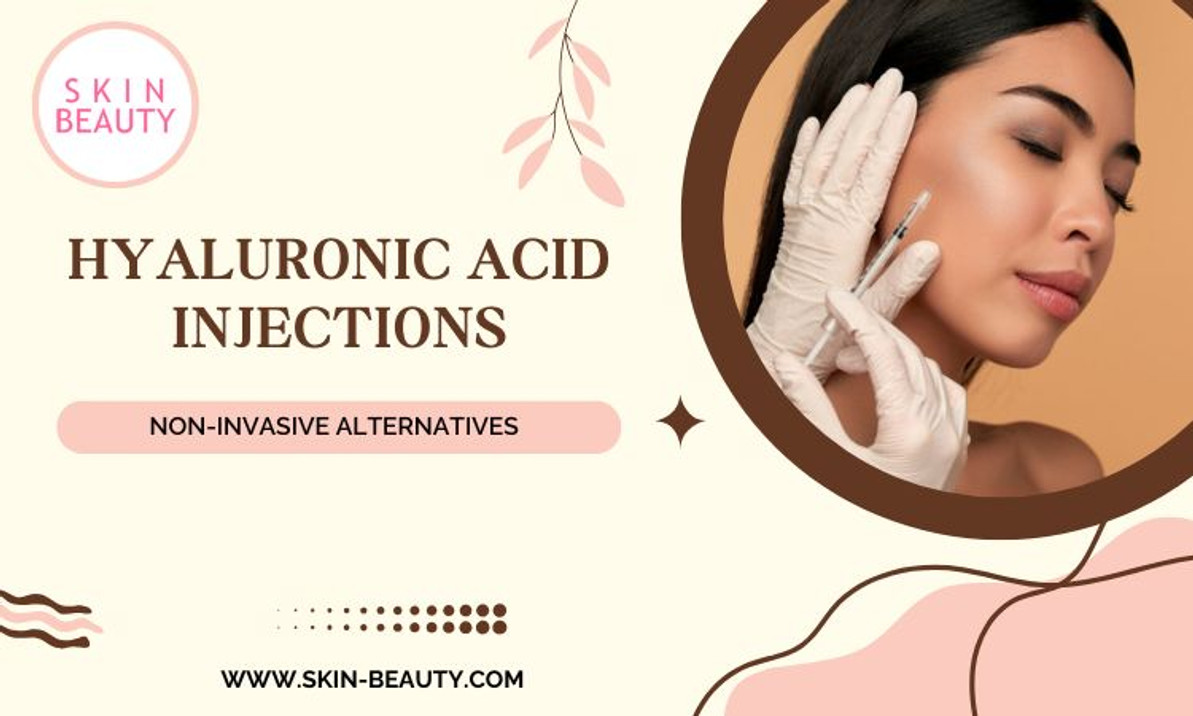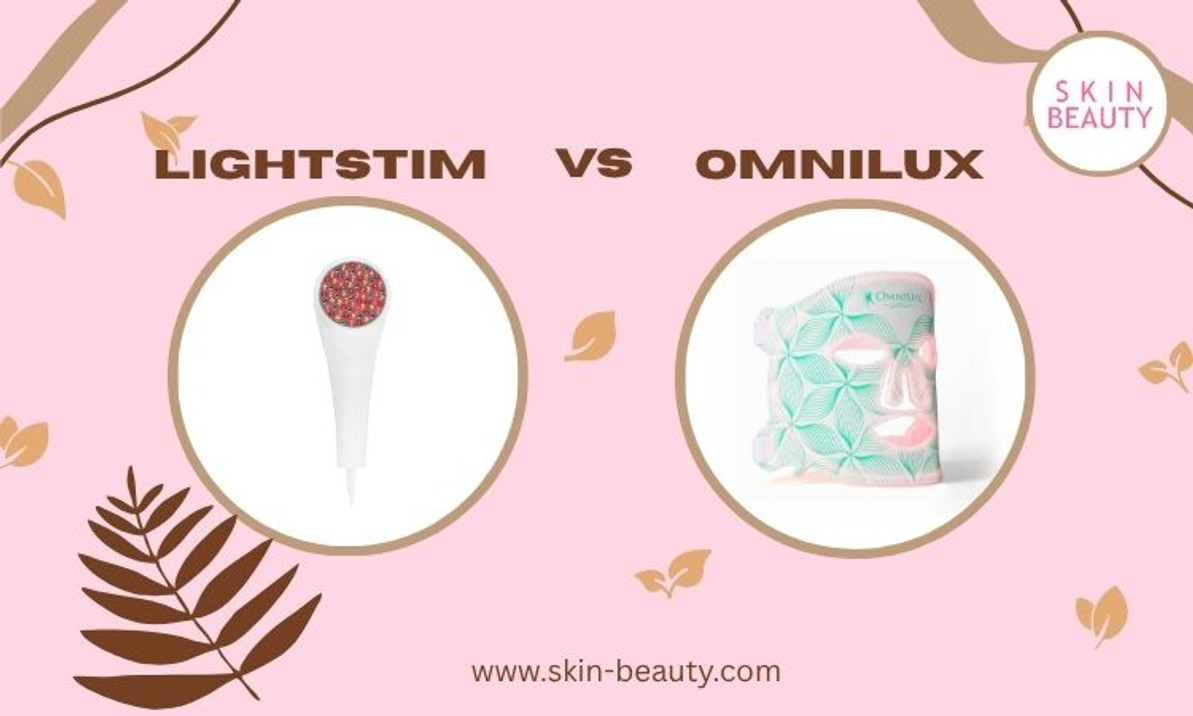Is Glycolic Acid or Retinol Better For Your Skin
Is Glycolic Acid or Retinol Better For Your Skin
Glycolic Acid or Retinol? Which is Better for Skin Texture
If you’re looking to buy skincare products that can smooth and brighten your skin, two ingredients always come to mind: Glycolic Acid and Retinol. Both have their own benefits in improving skin texture, fine lines and overall skin health. Knowing the difference between how glycolic acid and retinol affects the skin will help you decide which product is better for you in achieving your skincare goals.
What Is Glycolic Acid?
Glycolic Acid is a naturally occurring ingredient derived from sugarcane, pineapple, and sugar beets. The alpha hydroxy acid (AHA) derived from sugarcane is most commonly used in skincare products. It’s a popular choice among the AHA’s because it has the smallest molecular structure which can penetrate deeper into the skin providing better visible results. Glycolic acid is commonly used to exfoliate the skin by dissolving the bonds between skin cells. This process helps to removed the dead skin and accelerate turnover to reveal brighter and smoother skin.
Benefits of Glycolic Acid for Skin Texture
1. Exfoliation
Glycolic acid removes the top layer of the skin which helps to refine the skin texture for a smoother complexion.
2. Brightening
The exfoliation process promotes cellular turnover to reduce dark spots and pigmentation, for an even and radiant complexion.
3. Hydration
Removal of dead skin cells allows for better absorption of skincare products like moisturizers to improve skin hydration.
4. Anti-Aging
Regular glycolic acid treatment can reduce fine lines and wrinkles and smooth out skin over time because it helps to promote collagen production.

What Is Retinol?
Retinol is a form of Vitamin A that can penetrate deeper into the skin where elastin and collagen are found. Retinol stimulates collagen production and accelerates cell turnover to repair skin damage and improve texture.
Benefits of Retinol for Skin Texture
1. Cell Turnover
Retinol accelerates cell renewal by encouraging cells to divide more quickly. It promotes cell regeneration to replace damaged cells with new and healthier ones, resulting in smoother skin. This process improves the skin's texture and enhances its overall appearance by reducing the visibility of imperfections such as fine lines and uneven skin tone.
2. Collagen Boost
Retinol stimulates collagen production to firm skin and reduce fine lines and wrinkles. Collagen is a protein that gives your skin structure, strength, and elasticity.
3. Texture Improvement
The cell turnover process accelerates the natural shedding of dead skin cells, resulting in smoother skin texture. This enhanced shedding process is crucial in maintaining a youthful and vibrant complexion, as it helps to eliminate dull skin and reveal fresher, healthier skin underneath. By promoting the removal of dead skin, retinol not only improves the skin's surface but also aids in unclogging pores, which can significantly reduce the occurrence of acne breakouts.
4. Acne Control
Removing dead skin cells will prevent clogged pores minimizing the likelihood of acne breakouts.

Do Glycolic Acid and Retinol Work Well Together?
When used correctly, Glycolic Acid and Retinol can work together to deliver amazing results. Glycolic Acid’s exfoliating properties allow Retinol to penetrate deeper, making your routine more effective. But since they’re both strong ingredients, take precautions and start slow while monitoring your skin’s response to avoid irritation. Alternating glycolic acid with retinol might be a good choice if the skin does not tolerate both use simultaneously.
Understanding the Difference Between Glycolic Acid and Retinol
When deciding whether to use glycolic acid or retinol, you must assess your skin condition and what you’re trying to achieve. As mentioned before, glycolic acid works as a surface exfoliant to remove dead cells for clearer and brighter skin, and retinol works deeper in the skin, stimulating collagen and elastin production to target fine lines, firmness, and texture at a cellular level.
Which Skin Types are Suitable for Glycolic Acid and Retinol?
Oily Skin/Acne Prone Skin Type
Individuals with oily or acne-prone skin may benefit more from glycolic acid due to its exfoliating properties. It will help unclog pores, remove excess dead skin cells, and reduce sebum. Oily skin can also benefit from retinol by increasing cellular turnover, making it less acne-prone.
Dry Skin/Aging Skin Type
Retinol is for more dry and mature skin, targeting fine lines and wrinkles and skin that shows signs of aging. To maintain hydration, retinol should be paired with hyaluronic acid to help lock in moisture.
Addressing Sensitive Skin Concerns: Glycolic Acid vs. Retinol
If you have sensitive skin, it's essential to approach glycolic acid and retinol with caution. Start with low concentrations and gradually increase usage to determine what works best for your skin without causing irritation.
Glycolic Acid vs Retinol: Key Takeaways
Both glycolic acid and retinol benefit the skin. Here are some key takeaways to help you determine which one is better for your skin type and concerns. You may even want to use both, considering that each product has its own unique benefits.
Retinol Key Takaways
Collagen Production - Retinol improves firmness and elasticity by stimulating collagen production.
Free Radicals - Retinol penetrates the dermis to help neutralize free radicals and prevent skin damage that leads to wrinkles.
Hyaluronic Acid - Retinol can help plump and moisten the skin because it increases hyaluronic acid production in the skin. Hyaluronic acid binds to water molecules to improve the water content of your skin.
Glycolic Acid Key Takeaways
Aging - Helps smooth wrinkles, improve skin tone and texture, and reduce the appearance of age spots.
Hyperpigmentation - Fades dark spots caused by sun damage, such as freckles, liver spots, and melasma.
Acne - Glycolic acid can help clear acne and control breakouts. Removing dead skin cells minimizes clogged pores that lead to acne.
Skin Tone - Improves skin coloring and even out skin tone.
Skin Hydration - It helps plump the skin and prevent it from drying by increasing the natural content of hyaluronic acid.
What’s The Final Verdict? Retinol or Glycolic Acid?
Glycolic acid and retinol both have benefits for smoother, younger-looking skin. Glycolic Acid’s exfoliation is good for surface-level smoothing, and Retinol is good for deeper issues like fine lines and texture irregularities. Whether you choose one or both, consistency is key to getting smoother, brighter skin.
Recent Posts
-
Hyaluronic Acid Injections
Hyaluronic Acid Injections: What to Know & Non-Invasive Alternatives That Actually Work In the p …Jun 17th 2025 -
Kojic Acid Creams
My Kojic Acid Journey: How One Ingredient Transformed My Skin (And the Best Kojic Acid Creams to Try …Jun 11th 2025 -
LightStim vs. Omnilux
LightStim vs. Omnilux: My Real LED Skincare Results & Which One I Recommend LED light therapy&nb …Jun 3rd 2025




